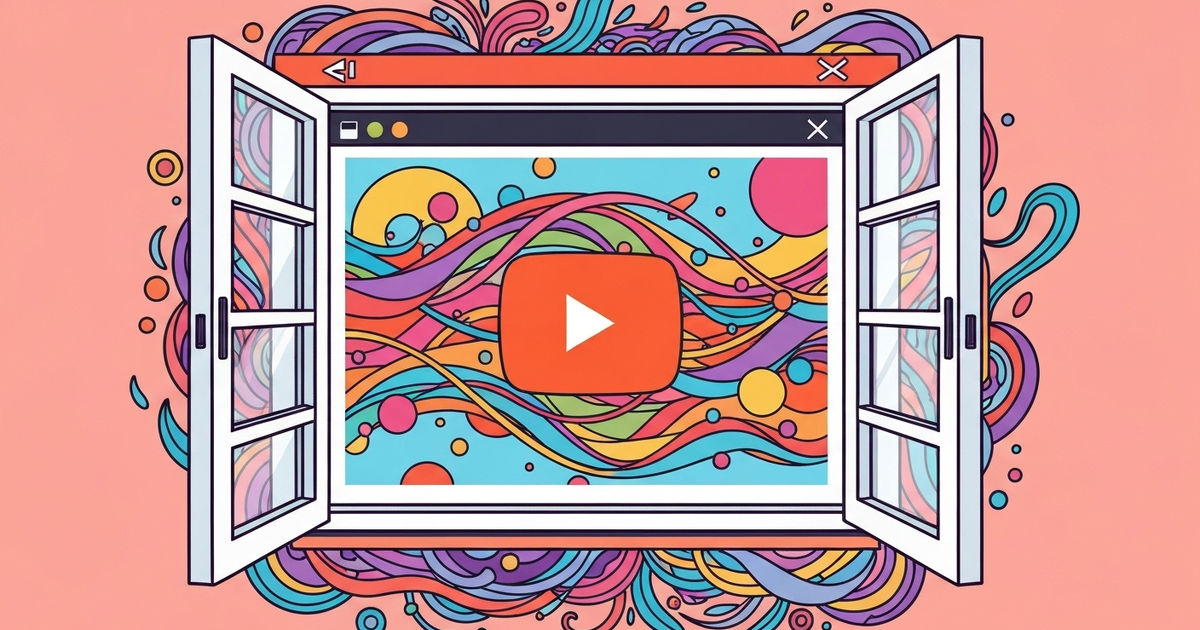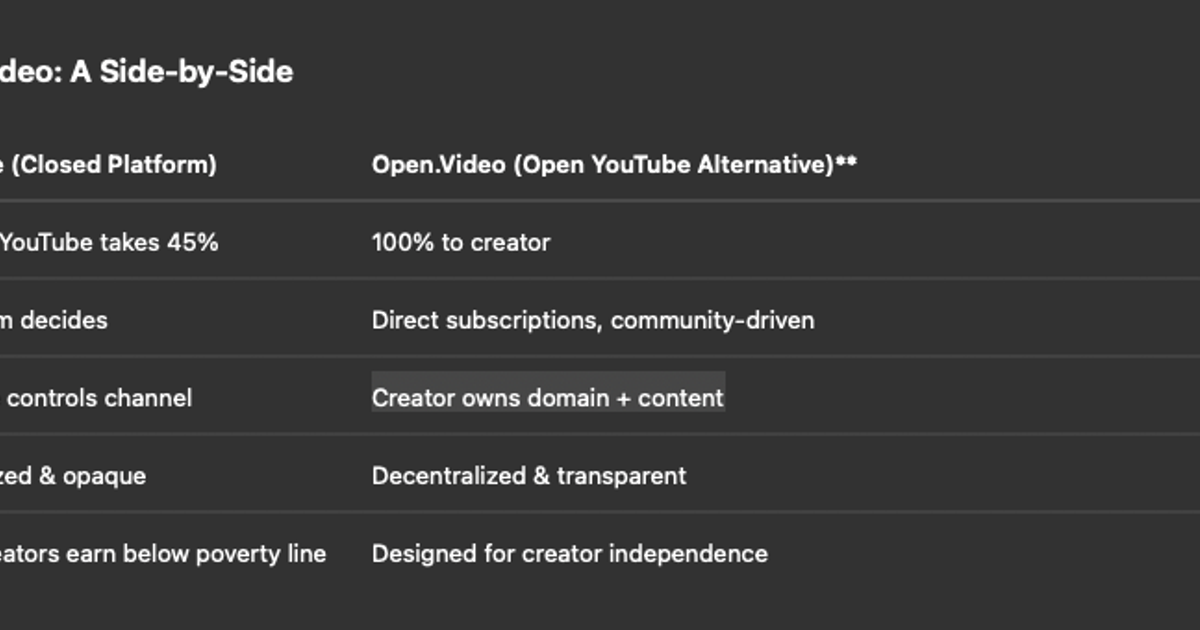Why Everyone Should Use An Open YouTube Alternative
Creators often don’t realize how much they’re losing just by being on YouTube or TikTok. These platforms act as intermediaries between creator and audience, taking huge percentages of ad revenue:

Why Everyone Should Use An Open YouTube Alternative
The creator economy is booming, but the platforms controlling it are failing creators. YouTube, TikTok, Instagram, and Facebook have built massive empires by monetizing creator content, yet most creators earn little, lose ownership of their audiences, and are forced to play by opaque algorithmic rules.
This has left creators asking a critical question: what is the best YouTube alternative?
The answer isn’t just another closed platform—it’s an open YouTube alternative where creators own their channels, keep their revenue, and decide how they interact with their audiences. That’s the vision of Open.Video, and it may be the most important shift in the future of online video.
The Hidden Cost of Closed Platforms
Creators often don’t realize how much they’re losing just by being on YouTube or TikTok. These platforms act as intermediaries between creator and audience, taking huge percentages of ad revenue:
The math is grim:
Meanwhile, platforms like YouTube report billions in annual ad revenue. Their shareholders profit, but creators—the ones actually producing the content—get crumbs.
This imbalance shows why creators should be searching for an open YouTube alternative.
Algorithmic Gatekeeping
Revenue is only part of the problem. Closed platforms also control visibility through algorithms:
This results in:
“Algospeak”—terms like unalive instead of dead—exists solely because creators fear algorithmic censorship.
The cultural cost is clear: the platforms shape not just how creators earn but what creators make.

Why an Open YouTube Alternative Is the Future
Open.Video flips the model. Instead of being a tenant on someone else’s platform, you own your channel, your audience, and your earnings.
1. 100% Revenue Belongs to the Creator
With Open.Video, there is no 45% cut, no disappearing Creator Fund, no arbitrary rules on what counts as monetizable. Whether you sell premium subscriptions, collect fan donations, or run your own sponsorships, every dollar goes straight to you. This isn’t just fairer—it’s sustainable.
2. Creator Sovereignty
On YouTube, your channel exists at Google’s discretion. One policy shift can delete years of work.
With an open YouTube alternative like Open.Video:
This sovereignty means creators finally have control over their careers.
3. Cultural Pluralism
Instead of one central algorithm dictating culture, Open.Video creates a federated ecosystem:
4. Decentralized Discovery
In a federated video ecosystem, discovery isn’t limited to YouTube’s recommendation engine. Viewers can:
This creates room for innovation in video discovery and distribution—something YouTube has intentionally suppressed to maintain control.
5. Resilience & Security
Creators on closed platforms are one strike away from losing everything.
In an open system:
This resilience makes Open.Video the only real long-term YouTube alternative.
The Bigger Picture: Why the World Needs Open.Video
The shift toward an open YouTube alternative isn’t just about money. It’s about the future of culture, independence, and freedom online.
Just as open-source software transformed technology, Open.Video can transform digital media.

Why Every YouTube Creator Should Care
If you’re a creator on YouTube today, you’re renting space in a walled garden. Your career depends on:
But audiences don’t belong to YouTube—they belong to you. And if you’re serious about building a future-proof career, you should already be looking for an open YouTube alternative.
Open.Video offers exactly that: independence, sovereignty, and fairness.
Creator Interests Come First, Thats Open Video
We are at a crossroads. One path is the status quo: creators trapped in closed platforms, fighting for visibility, and losing nearly half of their revenue. The other path is an open future—where creators control their platforms, own their communities, and thrive independently.
The world doesn’t just need another YouTube alternative. It needs an open YouTube alternative.
Open.Video represents that future. It’s not anti-YouTube—it’s pro-creator. It’s the evolution of online video, where freedom and independence replace dependency and control.
For creators, this is the chance to finally own your career. For audiences, it’s the chance to enjoy a richer, freer media landscape.
The creator economy can only be sustainable if it’s truly of the creators. And that means opening video.
About Tyler Bishop
Tyler a former start-up founder, Business Journal 30-under-30 recipient, and media technology industry executive.
